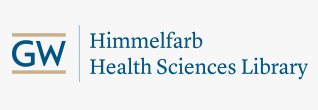Population Pharmacokinetics and Dose Optimization of Piperacillin in Infants and Children with Pneumonia
Authors
Totsapol Jirasomprasert, Department of Clinical Pharmacy, Institute of Clinical Pharmacology, Key Laboratory of Chemical Biology (Ministry of Education), NMPA Key Laboratory for Clinical Research and Evaluation of Innovative Drug, School of Pharmaceutical Sciences, Cheeloo College of Medicine, Shandong University, Jinan, China.
Li-Yuan Tian, Department of Respiratory Care, Children's Hospital of Hebei Province affiliated to Hebei Medical University, Shijiazhuang, China.
Dian-Ping You, Pediatric Research Institute, Children's Hospital of Hebei Province affiliated to Hebei Medical University, Shijiazhuang, China.
Ya-Kun Wang, Department of Respiratory Care, Children's Hospital of Hebei Province affiliated to Hebei Medical University, Shijiazhuang, China.
Lei Dong, Department of Pharmacy, Children's Hospital of Hebei Province affiliated to Hebei Medical University, Shijiazhuang, China.
Ya-Hui Zhang, Department of Clinical Pharmacy, Institute of Clinical Pharmacology, Key Laboratory of Chemical Biology (Ministry of Education), NMPA Key Laboratory for Clinical Research and Evaluation of Innovative Drug, School of Pharmaceutical Sciences, Cheeloo College of Medicine, Shandong University, Jinan, China.
Guo-Xiang Hao, Department of Clinical Pharmacy, Institute of Clinical Pharmacology, Key Laboratory of Chemical Biology (Ministry of Education), NMPA Key Laboratory for Clinical Research and Evaluation of Innovative Drug, School of Pharmaceutical Sciences, Cheeloo College of Medicine, Shandong University, Jinan, China.
John van den Anker, Division of Clinical Pharmacology, Children's National Hospital, Washington, DC, USA.
Yue-E Wu, Department of Clinical Pharmacy, Institute of Clinical Pharmacology, Key Laboratory of Chemical Biology (Ministry of Education), NMPA Key Laboratory for Clinical Research and Evaluation of Innovative Drug, School of Pharmaceutical Sciences, Cheeloo College of Medicine, Shandong University, Jinan, China.
Bo-Hao Tang, Department of Clinical Pharmacy, Institute of Clinical Pharmacology, Key Laboratory of Chemical Biology (Ministry of Education), NMPA Key Laboratory for Clinical Research and Evaluation of Innovative Drug, School of Pharmaceutical Sciences, Cheeloo College of Medicine, Shandong University, Jinan, China. tbh48@126.com.
Wei Zhao, Department of Clinical Pharmacy, Institute of Clinical Pharmacology, Key Laboratory of Chemical Biology (Ministry of Education), NMPA Key Laboratory for Clinical Research and Evaluation of Innovative Drug, School of Pharmaceutical Sciences, Cheeloo College of Medicine, Shandong University, Jinan, China. zhao4wei2@hotmail.com.
Yi Zheng, Department of Clinical Pharmacy, Institute of Clinical Pharmacology, Key Laboratory of Chemical Biology (Ministry of Education), NMPA Key Laboratory for Clinical Research and Evaluation of Innovative Drug, School of Pharmaceutical Sciences, Cheeloo College of Medicine, Shandong University, Jinan, China. zhengyi@sdu.edu.cn.
Document Type
Journal Article
Publication Date
11-27-2024
DOI
10.1007/s40272-024-00664-4
Abstract
OBJECTIVE: We aimed to determine the piperacillin disposition and optimize the dosing regimens for infants and children with pneumonia. METHODS: An opportunistic sampling strategy was used in this pharmacokinetic study. High-performance liquid chromatography was used to measure the concentrations of piperacillin in plasma samples. A population pharmacokinetic model was conducted using NONMEM. RESULTS: The pharmacokinetic data of 90 samples from 64 infants and children with pneumonia (age range: 0.09-1.72 years for infants and 2.12-11.10 years for children) were available. A two-compartment model with first-order elimination was the most suitable model to describe the population pharmacokinetics of piperacillin. A covariate analysis indicated that body weight and age were significant factors affecting clearance. Monte Carlo simulations showed that a 50-mg/kg every 8 h or every 12 h dosing regimen results in underdosing. Results both in infants and children showed that an extended infusion (3 h) of various dosing regimens (80, 100, or 130 mg/kg) three times daily or a 300-mg/kg continuous infusion can reach a therapeutic level based on the chosen target for the probability of target attainment threshold of 70%, 80%, and 90% at minimum inhibitory concentration breakpoints of 8 mg/L and 16 mg/L. CONCLUSIONS: A population pharmacokinetic model was obtained to evaluate the disposition of piperacillin, and the optimal dosing regimens were provided for use in infants and children with pneumonia.
APA Citation
Jirasomprasert, Totsapol; Tian, Li-Yuan; You, Dian-Ping; Wang, Ya-Kun; Dong, Lei; Zhang, Ya-Hui; Hao, Guo-Xiang; van den Anker, John; Wu, Yue-E; Tang, Bo-Hao; Zhao, Wei; and Zheng, Yi, "Population Pharmacokinetics and Dose Optimization of Piperacillin in Infants and Children with Pneumonia" (2024). GW Authored Works. Paper 5963.
https://hsrc.himmelfarb.gwu.edu/gwhpubs/5963

